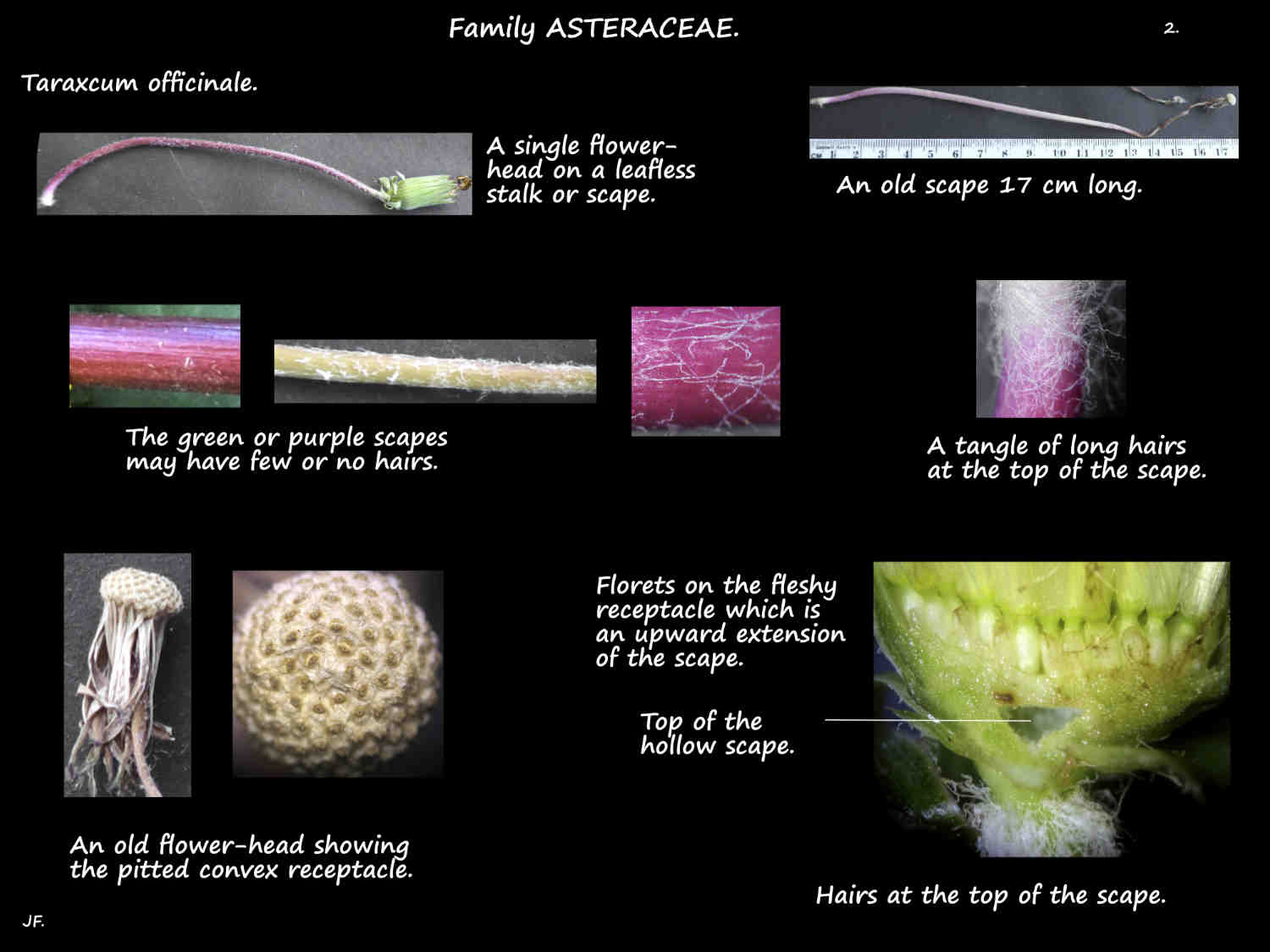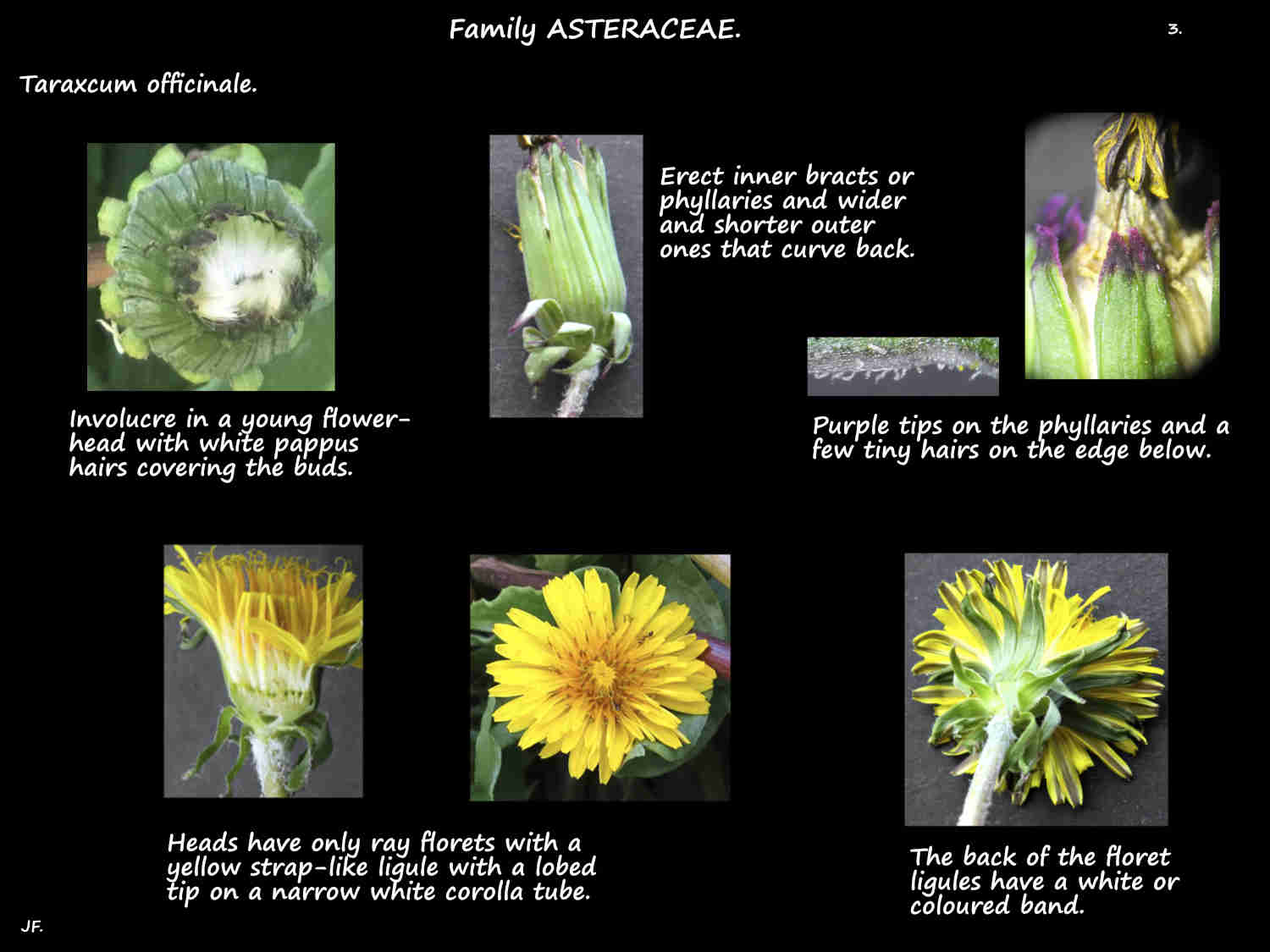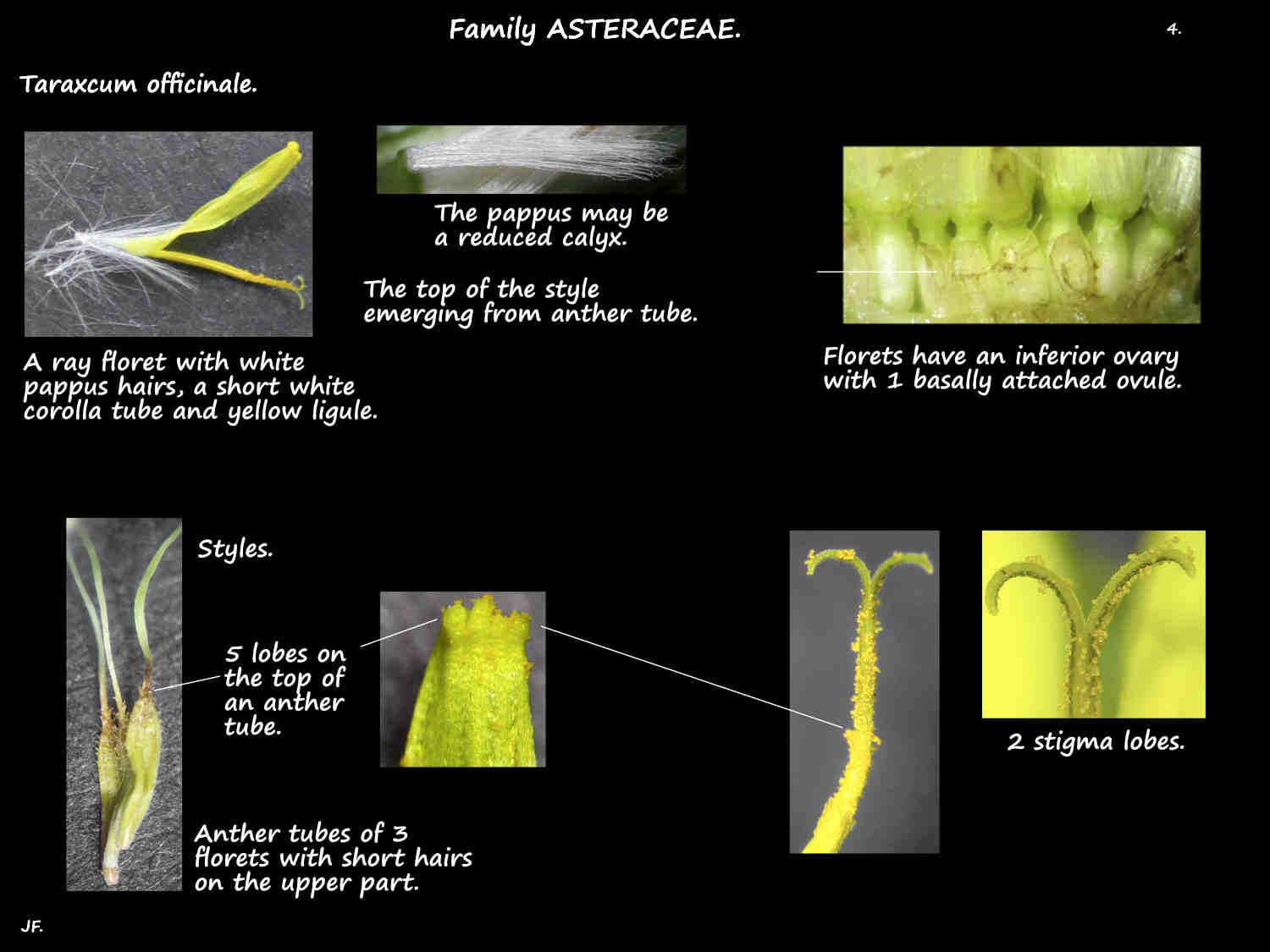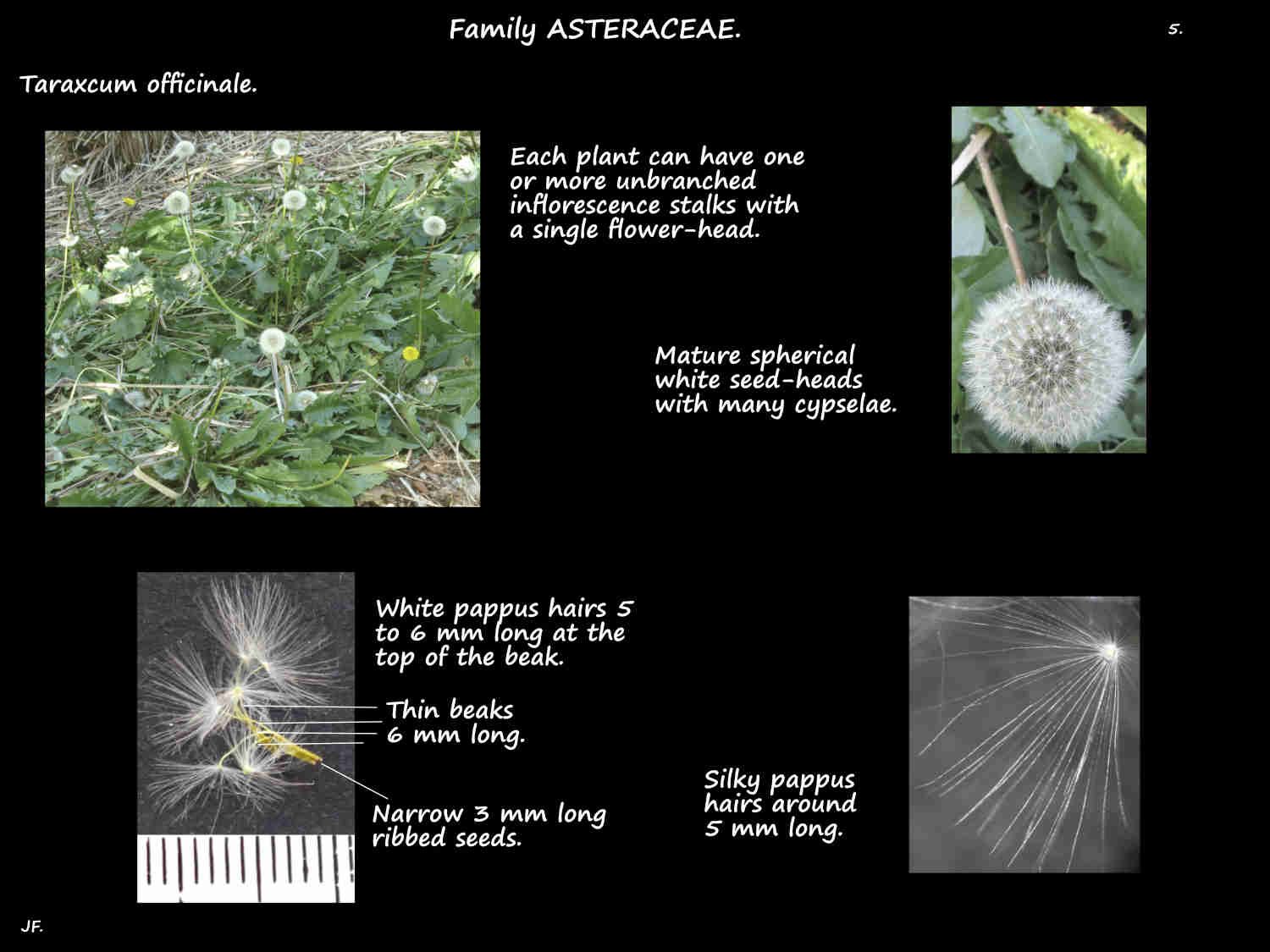Taraxacum officinale.
The Common Dandelion, from Europe and Asia is naturalised in Australia and is widespread in S. E. Queensland.
They reproduce sexually but also asexually resulting in more mutations that can lead to populations with slightly different features.
Because of this it is sometimes treated as the T. officinale complex rather than a single species.
The herbaceous perennial plants have a thick taproot that can be over 1 m long.
Leaves, in a basal rosette are on a stem only 1 to 2 cm long and all parts have a milky latex.
The horizontal and/or erect leaves are very variable in shape and the presence of hairs.
The have a petiole sometimes with small wings where the base of the blade runs down it.
The oblanceolate, obovate to oblong blades are 20 to 45 cm long and up to 10 (15) cm wide.
Juvenile leaves may have a smooth edge but adults are toothed or shallow to deeply lobed.
Lobes characteristically point to the base of the leaf and the terminal one is the longest.
The marginal teeth may be sharp or blunt.
The midrib is pale and the blade may have a few hairs on the lower surface but usually none.
Each plant produces 1 or more hollow leafless stalks or scapes each with a single flower-head.
Scapes, up to around 50 cm long are green or purplish and usually have some hairs at the top.
Flower-heads, up to 5 cm across have up to around 200 florets surrounded by an involucre.
Florets are on a flat or convex receptacle with a pitted surface and no scales (paleae).
The oblong to bell-shaped involucre has up to 18 bracts or phyllaries in 2 overlapping series.
The bracts in the outer whorl are shorter and wider than the more regular inner ones.
The inner phyllaries are erect until the seeds are mature while the outer ones curve out and back all the time.
Bracts are green with pointed dark purplish tips.
The head florets are all ray ones with a long strap-like ligule on a narrow corolla tube.
The bright yellow ligules, with 5 small lobes on the tip usually have a white or coloured stripe on the lower surface.
The 5 stamens, inserted onto the corolla tube have free filaments and anthers fused into a tube.
The single locule in the inferior ovary has 1 ovule with basal placentation.
The single style splits into 2 short branches with a stigma on the inner surface of each.
Hairs on the outer surface of the branches collect pollen as the style grows through the anther tube.
The dry fruit (cypselas not achenes which comes from a superior ovary) form a spherical seed-head.
The pale thin seeds, 3 to 4 mm long have up to 12 sharp longitudinal ribs.
At the tip is a beak around 1 cm long with pappus which is a tuft of silky hairs around 5 mm long.
When the seed-head is mature it looks like a white ball.
J.F.







